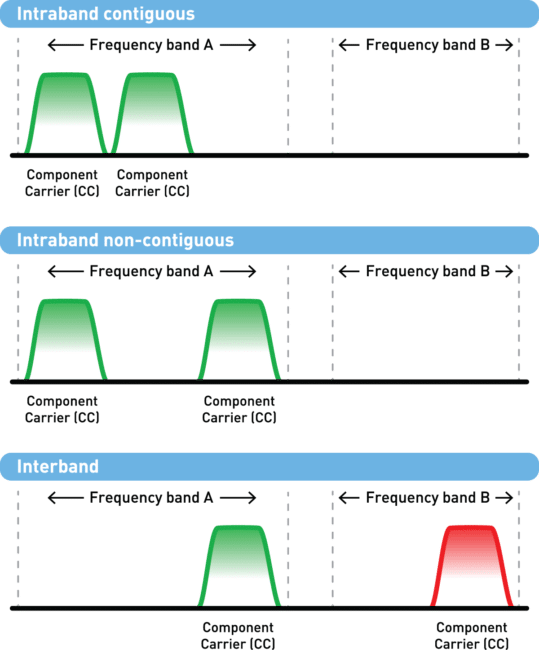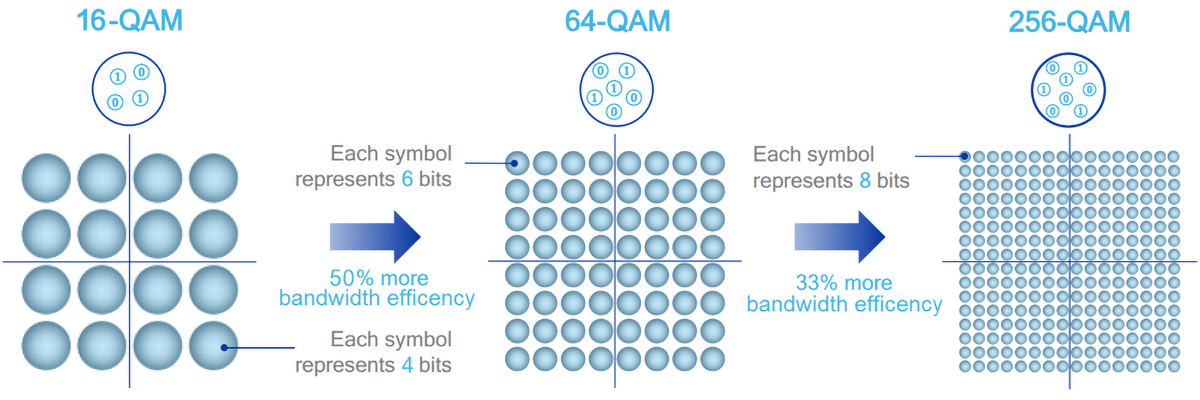Introduction
For a while now, consumers have had access to gigabit speeds (UE LTE Category 16 or above) in their smartphones. However, other 4G LTE devices and applications are still limited to sub-Gigabit LTE speeds and suboptimal service for customers and users. As a result, organizations from enterprises and manufacturing companies to municipalities, emergency first responders and others have been mostly unable to realize the powerful benefits that 4G LTE gigabit-speed connectivity provides.
Even as the world moves closer to fully commercial 5G, 4G Gigabit LTE is an essential milestone for device makers, delivering extensive coverage and value. Many of these network operators with Gigabit LTE deployments plan to maintain those deployments even after 5G.
According to the Gigabit LTE Networks May 2020 report from the Global mobile Suppliers Association (GSA), 315 operators in 142 countries or territories have deployed or launched networks that meet the LTE-Advanced mobile communication standard.
It’s entirely possible to achieve gigabit speeds in 4G LTE devices for wide-ranging applications, but the right ingredients must be assembled in the right mix. Today, most 4G Gigabit LTE modules miss a crucial component: the radio engineering completeness that gives full Gigabit LTE performance in the uplink. Without a module capable of delivering 150 Mbps in uplink speed, 4G Gigabit LTE offers only a marginal improvement over standard LTE for most non-consumer application areas.
Organizations looking for the rich and seamless user experience that only the most advanced 4G LTE standard provides need to follow a proven gigabit connectivity recipe. This recipe will guide them in the right direction to define gigabit project requirements before they invest. It will also lead them to ask the right questions and source the right ingredients for real gigabit success.
In Search of Non-Consumer 4G Gigabit LTE Performance
Modules are the heart of non-consumer cellular-connected devices, whereas chips fulfill that role for cellular handsets and tablets. Many 4G LTE modules on the market promise full performance, and their spec sheets seem to back them up. Still, almost all these modules fall short of delivering expected speeds in the field. What’s the problem? They don’t include all the ingredients required for successful carrier aggregation in real-world scenarios.
What Is Carrier Aggregation, and How Can It Achieve Gigabit Performance?
Gigabit 4G LTE operation requires that sections of cellular spectrum be combined to deliver enough bandwidth carrying capacity to meet the UE Category 18 standard’s speed specifications. The challenge is that most mobile network operators (MNOs) in the United States own frequency ranges spread out in different mobile spectrum areas because of the Federal Communications Commission’s (FCC’s) spectrum allocation. Few carriers possess enough contiguous spectrum channels within the same band (intraband) to support a combination that will deliver the full bandwidth.

Therefore, original equipment manufacturers (OEMs) who want to take advantage of 4G LTE gigabit speeds in their devices must use modules that can combine carriers from different spectrum bands. Known as carrier aggregation (CA), this capability must be applied in both downlink and uplink directions to achieve real gigabit performance, such as that specified in the UE Category 18 standard. Successful Gigabit LTE operation requires 4 x 4 multiple-input, multiple-output (MIMO) antennas, high-order modulation and interband CA capability.
How to Achieve True Gigabit LTE
Assemble the Right Ingredients
Ensure you have the necessary components to attain the Gigabit LTE speed you need to support your business. The Gigabit LTE Networks May 2020 report found that 327 operators in 138 countries or territories are investing in at least one of the vital component technologies necessary for Gigabit LTE.
4 x 4 MIMO Antennas
Effective CA requires the use of 4 x 4 MIMO antennas instead of one or two antennas. Four-antenna arrays provide a much greater capability to interact with the base station and leverage spatial diversity. Higher speeds in gigabits cannot be accomplished with fewer antennas.
Using MIMO antennas creates multiple radio paths, thereby improving the link’s “spectrum efficiency,” a measure of how efficiently the physical layer protocol uses a spectrum with limited frequency to transmit information.

4 x 4 MIMO antennas provide 1.8x spectrum efficiency compared to the 1x spectrum efficiency provided by 2 x 2 MIMO antennas.

Digital modulation maps data to positions in the amplitude/quadrature plane (symbols or constellations).
Interband CA on the Uplink
With intraband CA insufficient to meet spec, some module manufacturers have developed interband CA for the uplink side. Interband CA combines noncontiguous sections (component carriers — CC) of spectrum from separate frequency bands to achieve the broader bandwidth required for the wireless signals. Interband CA is one of the primary technologies needed to reach Gigabit LTE performance, supporting the high-speed uplinks and downlinks demanded by many use cases.
New business models and bold new uses of cellular broadband rely heavily on the highest-performing uplink possible. Worldwide, networks have rolled out LTE Category 18 to support 150 Mbps peak uplink speed broadly. This performance level requires aggregation of two-component carriers (contiguous or otherwise) relayed over 64-QAM and 4 x 4 MIMO. In some cases, with mobile operators that own these two-component carriers inside the same band, intraband CA can deliver the 150 Mbps uplink speed, but not consistently. However, with interband CA capability, carriers from two or more bands can be combined to produce the required radio bandwidth for 150 Mbps in the uplink. Combining carriers from two or more bands is only possible if the module’s uplink radio has two parallel signal paths capable of supporting an independently selected band.


Combine with Enterprise-Grade Performance
Assembling the right ingredients is only the first step. Those ingredients must be combined in a 4G LTE module that supports the performance gigabit-speed use cases required to create a result that lives up to its promise. The module should offer:
Enterprise-grade performance
- Robust and reliable performance and a rich feature set
- Carrier approvals, regulatory compliance and global band support
Indoor and outdoor operation
- A full industrial operating temperature range
Ability to withstand a harsh environment
- Adherence to the highest standards of industrial manufacturing
- Resilience to shock, vibration, dust and moisture
Support from a trusted partner
- Global technical support
- A supply guarantee
- Full component traceability, supplier qualification and automotive-grade processes
4G LTE Use Cases
As true gigabit speeds have come within reach, the range of use cases for non-smartphone 4G LTE devices has grown ever broader and more diverse. Many of these use cases — such as first responder mobile devices — require fast uplink and downlink, making the need for interband CA a priority.
Consumers: Smart home technologies, including smart appliances, fixed wireless broadband, security systems and cameras, all of which can be preprogrammed or accessed via smartphone
Enterprise SD-WAN (software-defined wide-area networking): Branch-office networking, collaboration, cloud computing, storage and backup, online file sync, multipoint video and web conferencing, telepresence, and virtual desktops
Health care: Hospital automation, patient device monitoring (such as pacemakers) and emergency patient-monitoring notification systems
Industrial IoT: Smart distribution networks that direct the movement of components and finished goods across the supply chain
Public infrastructure: Smart city and transportation systems, such as sensor-enabled traffic monitoring and signaling and real-time public transportation information
Emergency and first responders: Mobile gear for police, firefighters, EMTs and other emergency first responders, including vehicle-mounted and body-worn cameras and laptops
Education and distance e-learning: Online classes and distance e-learning platforms, including massive open online courses (MOOCs), which enable many thousands of students worldwide to access classes
Advanced industrial imaging: X-ray and infrared images for testing product integrity and meeting regulatory requirements

Preparation Will Make Your Recipe for Gigabit Speed a Success
The benefits of 4G Gigabit LTE are here, ready for your next gigabit project. When you’re writing your next request for quotation (RFQ), make sure you do the following before committing to a module:
- Perform field testing to confirm the datasheet specs (ask the company for an evaluation kit).
- Check the module’s certification status across multiple carriers.
- Check for module readiness and maturity.
- Make sure the module has dual-SIM capability so it can use multiple carriers.
- Perform testing in real-world conditions for the module’s performance with temperature, shock, vibration, dust, electromagnetic interference and other radio frequency issues, and its ability to coexist with Wi-Fi, Bluetooth and other networks.
One final important consideration to keep in mind: Chipset specifications don’t tell the whole story. A module is more than its chipset specs — its performance depends on other hardware. Don’t judge the module by its chip. The surrounding technology is the critical part.
The Not-So-Secret Ingredient: The Telit LM960A18 Module
Gigabit speed is only elusive if you don’t have the right ingredients, and only one 4G LTE module combines them all. The Telit LM960A18 is the only module available on the market today that can achieve interband uplink CA.
Enterprise-Grade Performance
The Telit LM960A18 module has more CA combinations than all others in the certified-module category. Deploying multiple carriers requires interband CA in the uplink. Only the LM960A18 module supports interband in the uplink, making it the only module that can achieve the required maximum two-CA uplink speeds of 150 Mbps.
The LM960A18 module is designed and built to the highest manufacturing standards to hold up under harsh real-life environments, including full industrial temperature range, shock, vibration, dust, moisture and more.
Gigabit-Speed Data Cards
With its Gigabit LTE performance and full certification for all major carriers worldwide, the Telit LM960A18 global Category 18 LTE data card is designed specifically for enterprise router and gateway products. It’s the highest-category LTE PTCRB-certified data card supporting Gigabit LTE.
Telit is also shipping the FN980m data card, which is based on Qualcomm Technologies’ second-generation 5G Snapdragon X55 5G New Radio (5G-NR) modem. The modem includes antenna modules and integrated RF transceiver, RF frontend (RFFE) and antenna elements. These data cards are ideal for enterprise network appliances, branch and remote office routers, fixed wireless broadband internet access, and other bandwidth-intensive applications that can benefit from speeds in the 5 Gbps range.
Find out more about 4G Gigabit LTE and how Telit can help you realize its benefits. Start exploring robust, gigabit-speed Telit broadband solutions and request a consultation.
Visit our interband blog and mobile broadband page to find out more about interband and intraband CA.
Find the Right Mobile Broadband Data Card for Your Deployment
Request a Consultation and Sample Kit


